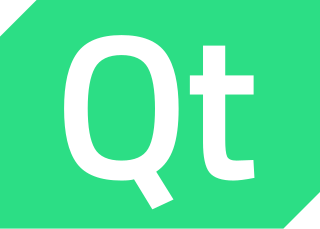In high-pressure scenarios like mission planning, border surveillance, or air traffic monitoring, every second matters. Operators often juggle multiple data sources, complex map layers, and real-time sensor feeds. In such environments, removing even a single mouse click can speed up response times and improve operational efficiency.
This is where offline voice command integration in a Qt + QGIS + C++ application becomes a game-changer.
Why Voice Commands Matter in Mission Planning & Surveillance
During mission-critical operations:
- Operators cannot afford to navigate through menus or search for functions.
- Hands may be occupied with controlling drones, operating radar, or handling communication equipment.
- Situational awareness is paramount — eyes should stay on the live map, not the keyboard.
By enabling voice commands, operators can execute functions instantly without breaking focus.
Why Offline?
In mission-critical environments like defense control rooms, border monitoring stations, or remote rescue operations, internet connectivity is not guaranteed — and sometimes intentionally disabled for security. Cloud-based voice recognition introduces latency, risks data leaks, and becomes useless in signal-denied zones. Offline voice commands ensure zero dependency on external servers, providing instant response, full data privacy, and uninterrupted operation regardless of network availability.
Advantages of Offline Voice Commands
Unlike online speech recognition tools, offline voice processing ensures:
- Security & Privacy – No data leaves the local network, crucial for defense and government applications.
- Reliability – Works even without internet connectivity in remote locations or during signal jamming.
- Low Latency – Immediate command execution without round-trip delays to cloud servers.
- Custom Vocabulary – Recognize only mission-specific commands to reduce false triggers.
How Manya Technologies Implements This
At Manya Technologies, we integrate offline voice commands into our Qt + QGIS + C++ solutions using Vosk API — an open-source speech recognition toolkit.
Our integration supports:
- English and Hindi (extendable to other languages)
- Cross-platform compatibility (Windows and Ubuntu)
- Custom command sets for different mission types
- Seamless map interaction with QGIS API
Code Example – Integrating Vosk with Qt + C++
Here’s a simplified example of recognizing predefined commands in a Qt application:
#include <vosk_api.h>
#include <QDebug>
VoskModel *model = new VoskModel("model-en");
VoskRecognizer *recognizer = new VoskRecognizer(model, 16000.0);
if (recognizer->AcceptWaveform(audioData))
{
QString result = QString::fromUtf8(recognizer->Result());
qDebug() << "Recognized:" << result;
if (result.contains("zoom in"))
mapCanvas->zoomIn();
else if (result.contains("show radar tracks"))
showRadarLayer();
else if (result.contains("switch to satellite"))
loadSatelliteLayer();
}
This setup listens for audio input, processes it entirely offline, and matches recognized text against predefined mission commands.
Example Voice Commands in a QGIS Mission Application
Some practical voice commands we implement for operators:
- “Zoom in” – Increase map zoom level.
- “Zoom out” – Decrease map zoom level.
- “Show radar tracks” – Display real-time radar overlay.
- “Hide radar tracks” – Remove radar overlay.
- “Switch to satellite” – Change base map to satellite imagery.
- “Start recording” – Begin mission data recording.
- “End mission” – Stop current mission tracking.
Mission-Critical Use Cases
- Air Defense Operations – Quickly toggle radar layers, highlight targets, and change map views without touching the keyboard.
- Search & Rescue (SAR) – Hands-free control of map layers while coordinating field units.
- Border Surveillance – Switch between multiple surveillance feeds and map overlays in real-time.
- Marine Navigation – Change nautical chart zoom levels or weather layers while steering.
Why Choose Manya Technologies for Voice Command Integration
- Proven Qt + QGIS Expertise – Years of experience delivering high-performance GIS solutions.
- Custom Voice Models – Tailored recognition for defense, aerospace, and surveillance domains.
- Security-First Approach – No cloud dependency; everything works locally.
- Cross-Platform Delivery – Runs on Windows and Ubuntu systems used in control centers.
Conclusion
Offline voice command integration in a Qt + QGIS + C++ application transforms how operators interact with mission-critical systems. It reduces manual effort, speeds up decision-making, and ensures reliability even in network-denied environments.
At Manya Technologies, we combine our deep expertise in Qt, QGIS, C++, and Vosk API to deliver secure, responsive, and fully offline voice-enabled GIS applications for defense, surveillance, and mission planning.
📌 If your organization needs an offline, secure, and reliable voice-controlled GIS solution, contact us today.

